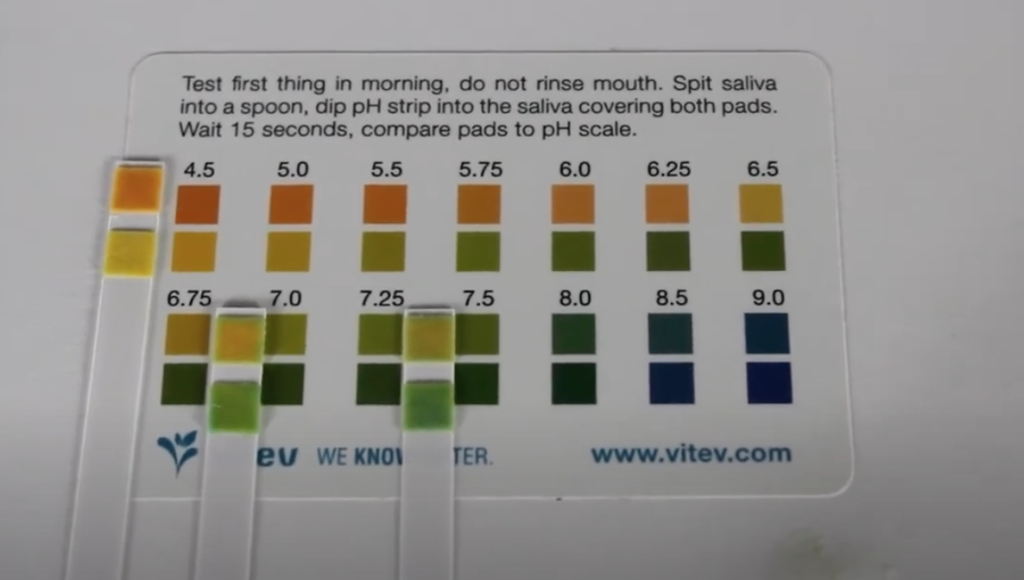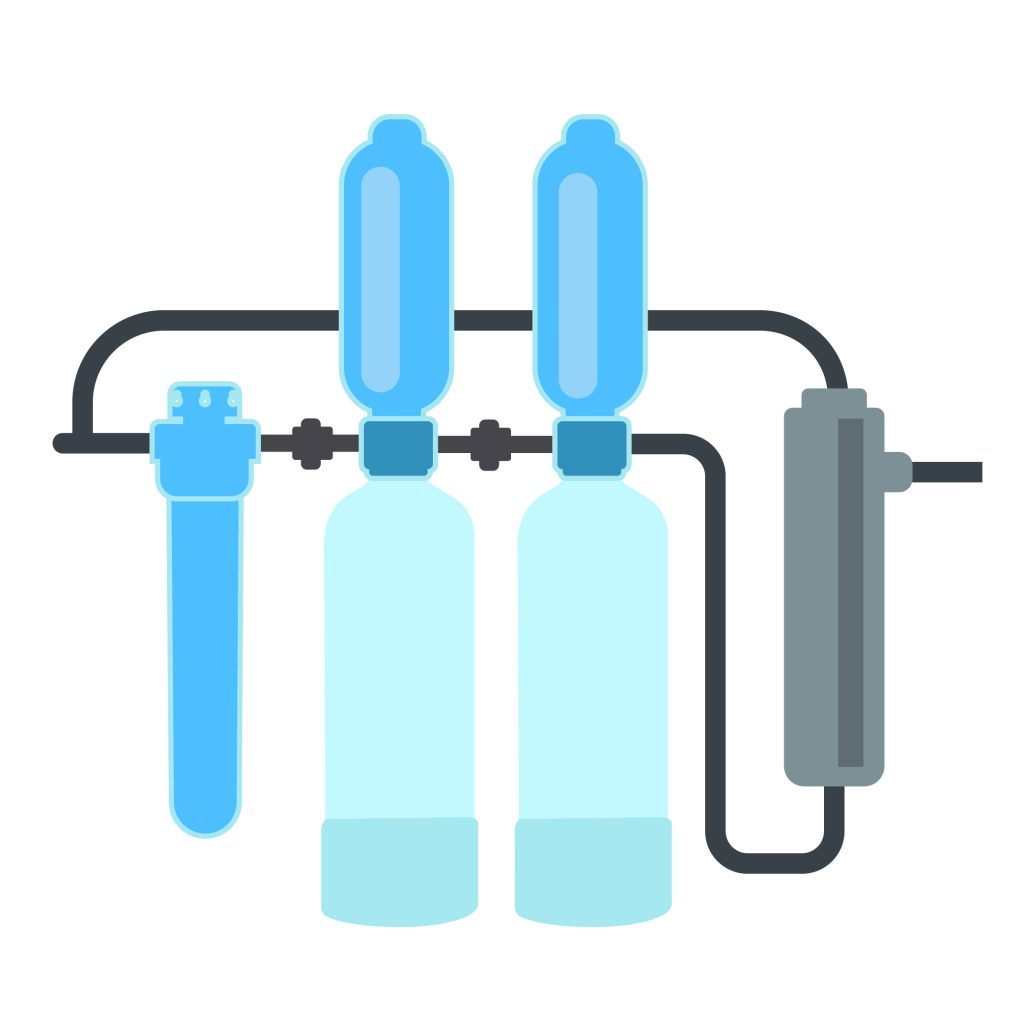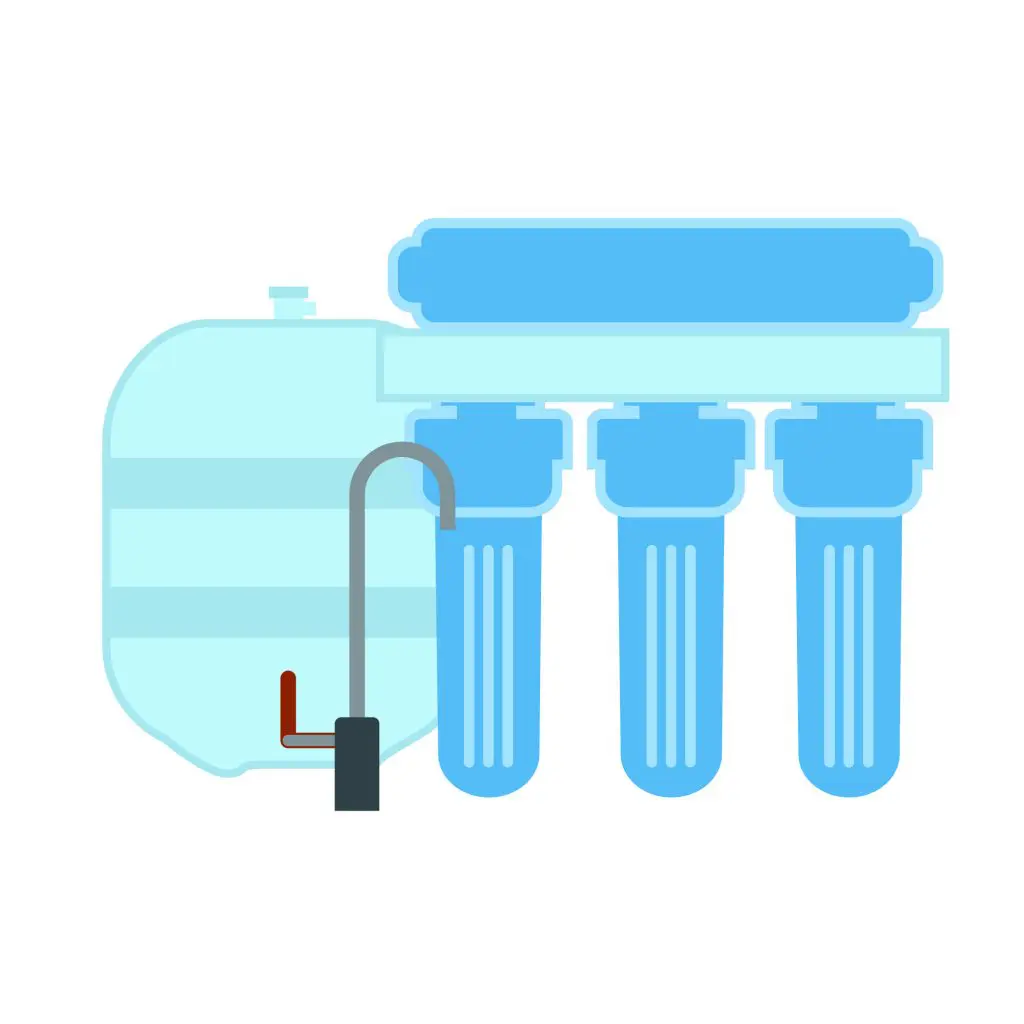When it comes to the water my family and I drink, there’s always that little question in the back of my mind that wonders “Is this water really safe to drink?”, or even worse “Why does this water taste like metal!?”

Sometimes, you find yourself forced to drink the water available, but in my own home where I can control what goes into our bodies, I want the best and healthiest water I can get.
After all, water is the most consumed liquid in the house and is also being used for not only drinking by me and my pets, but also bathing, cleaning dishes, washing clothes, filling the pool, etc. It’s literally the lifeblood of our existence!
Luckily, nowadays we have the ability to not only learn more about our home’s water and the concerns related to the contaminants it may harbor, but now with a little bit of knowledge we can fix it!
The top three reasons why your water tastes like metal may or may not come as a surprise, but we will go into detail about how to spot them before you even drink the water, key indicators you’ve got a problem and potential health concerns consuming it.
Table of Contents
Importance Of Testing Your Water
Before I go into this list I feel it’s extremely important to start with the first step for anyone when it comes to their home’s water.
Whether you’re renting a place, are a new home owner, looking to buy a new home, have been living in your house for some time already, and i’d even go as far as saying are thinking of buying land to build a house on that would require a well, the first step to ensure you have some “high quality H2O” as Bobby Boushe would say is to GET IT TESTED.
One of the best labs out there is My Tap Score. The simple process of collecting and sending out my water sample and the quality, ease of interpretation and thoroughness of the recommendations made for a great experience and well worth the money spent.


For the purpose of helping you understand why water is affecting certain materials, remember that water is known as the universal solvent. In general when water is absent of minerals and dissolved solids, and doesn’t have an alkaline pH (pH above 7), all in which keep it in equilibrium, water wants to dissolve the minerals and material(s) it comes into contact with until it is saturated with one or more of these things and returns to its neutral and passive state.
Top 3 Reasons Your Water Tastes Metallic
The TOP causes of water tasting like metal are Iron, Copper and Manganese. Let’s delve into these a little more as to what kind of taste to expect from these metals, some reasons these get into water in the first place and what impacts they can have in terms of your health.
Iron In Water
The taste of iron for most is unmistakable, most of us recognize the flavor it imparts from an early age during the process of losing our teeth or biting our tongues while eating our favorite foods.

Iron adds this distinct bitter flavor, that tastes for the most part like a rusted old piece of iron smells. Iron in your water can also be visually detectable by resulting in a rusty orangish color in the water sometimes accompanied by red, orange or even black sediment in your glass.
Iron is commonly caused by iron within the piping of municipality supply lines, water lines from your well if constructed with iron, or even from the plumbing within your own home.

These water distribution systems can be eroded as a result of acidic (pH below 7) water or water containing very little calcium hardness such as soft water. It is also caused by natural erosion of natural deposits.
When it comes to health concerns as a result of iron, or really any contaminant being present in water I reference the Environmental Protection Agencies’ National Secondary Drinking Water Regulations.
These limits don’t have to be adhered to unless specified by individual state’s regulations. Typically, they are limits in place that prevent cosmetic concerns such as taste, color and odor.
The iron limit recommended is 0.3 mg/L (milligrams per liter). While low levels or iron in drinking water are not directly harmful to your health, it can harbor iron reducing bacteria and potential other bacteria as a result of under deposit corrosion within piping systems.
Excessively high concentrations of iron can contribute to gastrointestinal issues, nausea, diabetes, and hemochromatosis. Prolonged exposure to high levels can also be detrimental to the health of your liver, pancreas and heart.
Copper In Your Water
Copper is a contaminant that may have serious negative health effects. Unlike the Environmental Protection Agencies’ National Secondary Drinking Water Regulations, the EPA’s National Primary Drinking Water Regulations are federally enforceable limits for municipalities to adhere to.

These guidelines should always be looked to and followed when determining the safety of the water you drink.
The taste of copper is distinct, often likened to the flavor we experience when a penny finds its way into our mouth as a child.
This metallic tinge, sometimes accompanied by a mild bitterness, is easily noticed, especially in high concentrations. From a visual standpoint of the water itself, there’s no obvious sign it’s present and looks like clean, clear drinking water.
The primary introduction of copper into water usually stems from the corrosion of copper pipes used in household plumbing or distribution systems.

Much like iron leaching, over time, slightly acidic, low hardness water and high concentrations of oxidizers i.e. chlorine, will erode the interior of copper pipes, which leaches copper into the water supply.
It is not uncommon for homes with a predominantly copper plumbing network to have elevated copper levels. Remember, get your water tested if you have a lot of copper plumbing to find out if the level that is present is a cause for concern.
With your health in mind, elevated copper can cause gastrointestinal issues as well as damage to your liver and/or kidneys. As noted by the EPA, those with Wilson’s Disease should consult with their doctor if the copper level exceeds the maximum contaminant level of 1.3 mg/L .
Maganese
Manganese’s flavor profile is a tad subtler than that of iron or copper but equally distinct. When present in higher amounts, it introduces a slightly bitter, metallic taste, which some liken to the aftertaste of stale nuts.

Manganese doesn’t stay hidden for long in water supplies, as it can manifest visually as a brownish tint. At times, it may also leave behind blackish specks of sediment, particularly evident in standing water.
Manganese often finds its way into our water systems through natural means, primarily from the dissolution of manganese-rich rocks and soils. It can be exacerbated if these rock formations are close to your home’s well water source. Additionally, older distribution systems with manganese parts or older household plumbing can be sources of contamination.
Extended periods of high manganese exposure can lead to issues with memory, attention and motor skills in both children and adults.
Like Iron, Manganese is listed in the Environmental Protection Agencies’ National Secondary Drinking Water Regulations. The recommended limit is 0.05 mg/L.
How Can I Tell What is Causing My Water to taste like Metal?
There are many other metals that we all are concerned about in our drinking water like mercury, lead, chromium-6, but these really don’t add any taste or odor to the water you’re drinking which makes them particularly dangerous!
Lab Testing
The best way to determine what is causing problems or that could cause problems is to get your water tested. MyTapScore is a highly respected lab to evaluate your water.
They are a certified lab, which means they undergo stringent lab equipment accuracy standards as well as water analysis and result quality control. Another reason I like this company is that they provide insight as to what actions you can take to solve any particular issue that is uncovered in your lab results.
This really takes the pressure off of having to interpret the results yourself. The going rate for a professional water treatment specialist is comparable to a lawyer’s fee believe it or not!
Having lab testing performed on your water isn’t the only option you have, but seriously, it is the BEST, and is the means by which water industry professionals base their decisions on if water related issues are present and when making pretreatment equipment recommendations.
Test Strips
These can be a good general indicator of potential issues with pH, but are highly variable in accuracy and testing results.

If they show something out of the norm, before you make any investment in equipment, have the water sample sent to a lab. Another thing to keep in mind is test strips only test for a finite amount of things, and are really tailored more for testing pool or spa water and not metals.
Reagents
Reagents are good primarily for determining calcium hardness for softener system size determination and proper operation verification with trace calcium hardness testing.
Reviewing publicly accessible city water reports: I’m not too much of a fan referencing these results for a number of reasons. Typically, the water reports you find online are outdated.
For example, I looked at my local municipalities’ posted water report and it was over a year old and this was a common theme found with multiple other municipalities I researched.
Additionally, the results posted are more detailed with biological results for lack of coliform counts to show effective sterilization of the water sent to the public as opposed to metals present, and do not go into detail on all the items listed in the Environmental Protection Agencies’ National Primary Drinking Water Standards.
Meters
The only item I think that’s worth spending a few bucks on for testing yourself at a relatively small cost is pH.

In order to get an accurate pH reading, pH always has to be measured at the water source and tested immediately. When you send in water samples to any lab, the results you get will not be accurate because of changes in temperature and exposure to air during transport.
How to Fix Water that Tastes Like Metal
The optimal water filter array to fix pretty much all concerns with metals being present within your water is the following:
Sediment Filter
Sediment filters, like spiral wound filters, bag filters, cartridge filters, and pleated filters provide the removal of large metal particulates as well as any other debris such as sand. These can be purchased in a range of options that vary in micron removal rating. This is your first line of defense for both your downstream equipment and your final water quality.
Resource: Top Rated Sediment Filters For Well Water
Green Sand Filter
If iron and manganese are your primary issues, a green sand filter is made to remove these metals and is worth looking into. They can remove large amounts of iron very effectively. Just remember, the media will require changing out so keep this in mind when purchasing the tank as well as the final plumbing for the unit.
Softener

If a green sand filter isn’t something that is needed due to the amount of iron present in the incoming water a softener will also act as an iron filter as sodium will exchange for iron in addition to calcium and magnesium. Keep in mind, iron entering the softener system will tend to foul the resin substantially faster than it would if iron was not present.
Important: If you have iron or copper piping within your home, installing a whole-home softener is going to do more harm than good for you due to soft water being corrosive to metals. The best option in homes with iron and copper piping is to use a point-of-use softener such as an under sink unit or compact unit where appropriate hoses are used to make the final connections to your sink/dishwasher/washing machine.
Carbon Filter

Carbon filters are very effective at removing trace coloration in water for crystal clear water in your glass. Ex. A carbon filter will effectively remove the yellow coloration found in water that has tannins present. Tannin in water isn’t necessarily harmful but it does make filling a bath a little more concerning and hesitant to get in it.
Carbon filters are also excellent at removing oxidizing chemicals like chlorine, so you don’t get the feeling as though you’re drinking pool water! They are also excellent at removing other harmful contaminants that we haven’t discussed. This list includes Mercury, polyfluoroalkyl substances (PFAS) and arsenic.
Carbon filters come in two primary forms. Granulated Carbon filters and Activated Carbon Block Filters. Granulated Carbon filters are great for chlorine removal and taste enhancement, but when it comes to contaminant removal, carbon block filters provide the optimal performance due to their increased surface area.
When installing any type of filter after a carbon filter, it is crucial to disinfect the line prior to putting the system back into service with a high dose of chlorine followed by a thorough line flush to prevent any biological growth from forming in the lines after the installation is complete.
This is because once you open a water line and it is no longer under pressure, it becomes unsanitary due to bacteria making its way in the line inevitably as a result of the cutting tools and plumbing work. It’s easy to forget this step, but you have to remember there is no chlorine in the water once it passes through a carbon filter.
Reverse Osmosis

Reverse Osmosis (RO) filtration for home use is primarily going to act as your last line of defense with regards to water purity and safety. RO systems do a great job of removing trace amounts of iron, copper and manganese as well as many other constituents that impact taste which includes chlorides. RO systems also remove harmful contaminants including mercury, and chromium-6, PFAS, Nitrates and Arsenic.
Many families utilize small RO units for drinking/cooking water in the kitchen. Using RO systems for whole home use is not typical nor recommended as the cost of ownership versus the benefits.
As we were talking about the corrosive nature of soft water, think of RO water as one of the most aggressive types of water there is. With that being said, even the water line running from the RO pressure tank to the final spigot should always be compatible material such as high-purity PVC, and never metal lines.
Mixed Media DI Filter
Mixed Media Deionization Filter systems are a great choice for point-of-use filtration. In essence, DI resin accomplishes the same removal of minerals within the water as an RO system, but it does this through ion exchange as opposed to osmosis of the water through the micro pores of a RO membrane. These systems perform the function of a softener, a carbon filter, a DI filter as well as a calcium contact filter.
Final thoughts
I believe being thorough is extremely important in your endeavor to create the best possible drinking water. If your water comes from a municipality, sometimes the reason why you have a particular issue may not even necessarily be something that is your responsibility to fix.
One way to make sure any particular problem should be your problem to fix is to not only test the water within your home, but to also pull a sample from the water coming directly from your municipal water supply. You do this by collecting an additional water sample BEFORE the water meter of your home and can send it to a certified lab like mytapscore.com. Cities typically have the stance that anything after your home’s water meter is YOUR problem to deal with and correct, but if the lab results from water tested before your home’s water meter shows contaminant levels above the EPA’s maximum control limits you have undeniable proof this is something they need to fix.


